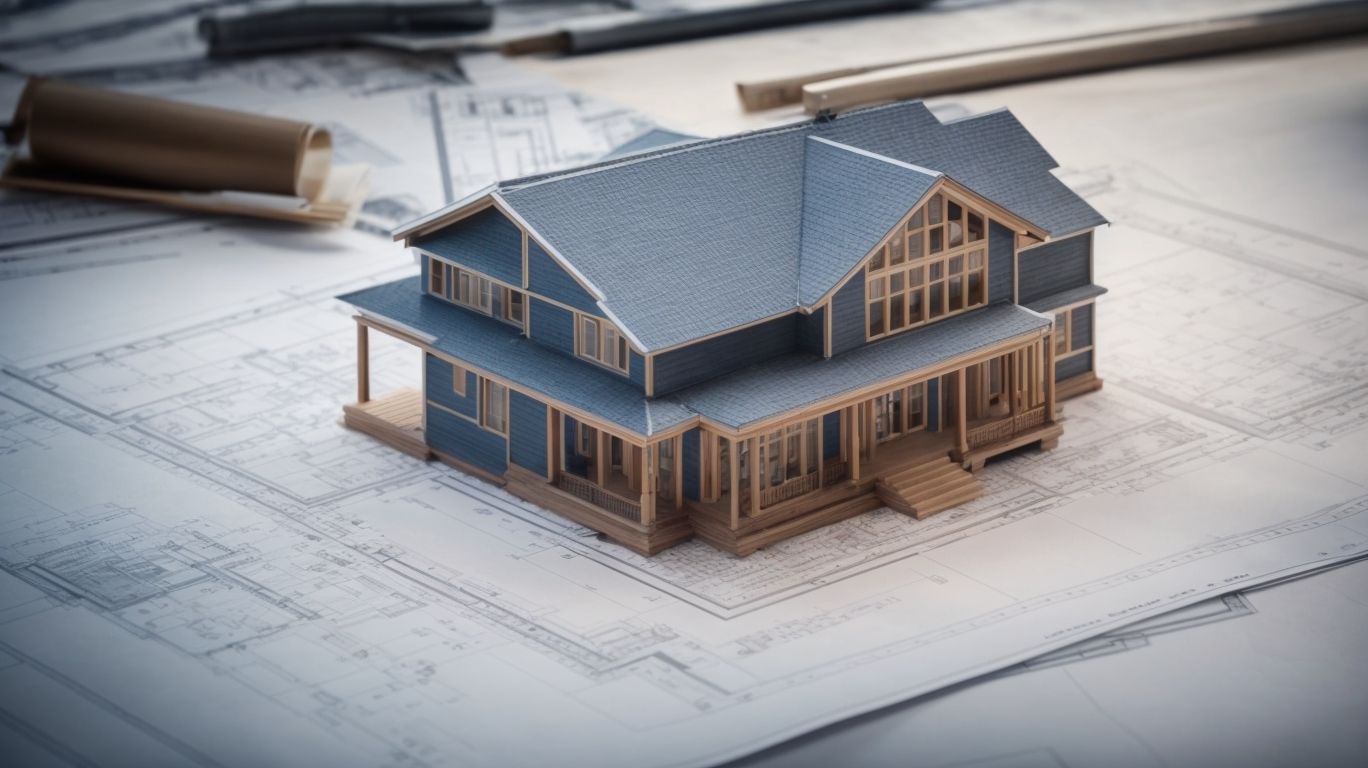
Navigating the Costs of Adding a Second Story in the Bay Area: Budgeting, Saving, and Planning
Considering adding a second story to your home in the Bay Area, but unsure about the costs involved?
This article will guide you through the financial aspects of this project, from construction expenses to design fees, labor costs, and materials.
Learn how to budget effectively, save money, and plan ahead for a successful second-story addition. Understanding the financial considerations is essential for those dreaming of extra space or increased property value.
Let’s navigate the costs together.
What are the Benefits of Adding a Second Story?
Adding a second story to your home in the Bay Area can bring a multitude of benefits beyond just additional space and living areas. It can significantly increase the property’s value and provide a high return on investment.
Expanding vertically can enhance the overall living experience by creating more design possibilities such as spacious bedrooms, additional bathrooms, and even a dedicated office or entertainment area. Not only does this upgrade offer functional advantages, but it also allows for more natural light to enter the home, making the space feel brighter and more inviting. A second story can provide a chance to incorporate modern architectural elements, boosting the curb appeal and overall aesthetic of the property.
What are the Costs of Adding a Second Story in the Bay Area?
When considering adding a second story to your Bay Area home, it’s essential to factor in various costs associated with construction, remodeling, permits, and adhering to zoning regulations. These expenses can vary significantly depending on the scope and scale of the project.
Construction costs for a second story addition can range from $100 to $300 per square foot, depending on the materials and finishes used. Remodeling expenses, such as electrical upgrades and HVAC adjustments, also need to be budgeted for. Obtaining permits can add to the overall cost, with fees varying by location. Navigating zoning regulations is crucial to avoid costly fines or delays. Accurate estimates play a vital role in effective budget planning to ensure the project stays within financial constraints.
Construction Costs
Construction costs for adding a second story in the Bay Area encompass expenses related to labor, materials, and the overall timeline for completion. It’s crucial to allocate a significant portion of the budget to these fundamental aspects.
- Labor expenses play a key role in construction costs, as skilled workers are essential for the quality and efficiency of the project.
- Material selection is another critical factor, with the choice of high-quality materials impacting both the aesthetics and durability of the new addition.
- Timeline considerations are important, as delays can result in increased costs.
- Quality workmanship is paramount, as poorly executed construction may lead to additional expenses for repairs or revisions, emphasizing the significance of investing in skilled professionals for the successful completion of the project.
Design and Architectural Fees
Design and architectural fees for a second-story addition in the Bay Area involve hiring professionals such as architects and engineers to create detailed plans and structural considerations. These fees are essential for ensuring the project’s success and compliance with building codes.
Professional architects play a crucial role in not only designing aesthetically pleasing spaces but also in ensuring structural integrity and functionality of the building. In collaboration with engineers and other experts, architects bring creativity and technical expertise to the table. Engineers focus on the construction’s technical aspects, making sure that the design is robust and safe.
Adherence to building codes is a fundamental aspect to guarantee that the project meets legal standards and is safe for occupants. The comprehensive approach of these professionals ensures that the second-story addition is both visually appealing and structurally sound.
Permitting Costs
Permitting costs for a second-story addition in the Bay Area include expenses associated with obtaining necessary approvals, complying with zoning regulations, and meeting stringent building codes. It’s crucial to allocate a portion of the budget for permits to avoid delays or legal issues.
Navigating the maze of zoning regulations is a critical aspect of the permitting process. Understanding the specific requirements for setbacks, height restrictions, and land use designations can be complex. Building codes further add layers of compliance needed for a successful project. Ensuring that the construction plans meet safety standards, fire codes, and structural integrity specifications is essential. Legal compliance is crucial not only to adhere to the law but also to protect the investment and ensure the project’s smooth progression.
Labor Costs
Labor costs for adding a second story in the Bay Area involve hiring skilled contractors and construction professionals to execute the project efficiently. These costs are a significant part of the overall budget and should be carefully managed and monitored.
Quality workmanship is crucial in ensuring that the project progresses smoothly and is completed to a high standard, helping to avoid preventable delays and costly rework. Reliable contractors bring a level of expertise that can ultimately save time and money by completing tasks efficiently. By managing labor expenses effectively, project managers can allocate resources wisely, avoid cost overruns, and maintain the financial viability of the construction project.
Materials Costs
Materials costs for a second-story addition in the Bay Area encompass expenses related to foundation work, structural materials, and finishing elements like windows, doors, and roofing. It’s essential to allocate resources efficiently for quality materials and sustainable construction.
These choices not only affect the initial budget but also play a crucial role in the long-term value of the property. Opting for high-quality materials ensures durability, reduces maintenance costs, and enhances the overall aesthetic appeal of the structure. Embracing sustainable construction practices not only benefits the environment but also attracts eco-conscious buyers, potentially increasing the property’s resale value. Making informed decisions about materials is key to achieving a successful and sustainable second-story addition project in the Bay Area.
How to Budget for Adding a Second Story?
Budgeting for a second-story addition involves careful allocation of resources, detailed cost breakdowns, and strategic planning to ensure that the project stays within financial constraints. It’s crucial to prioritize budget allocation based on essential expenses and potential contingencies.
Strategically planning the budget ensures that funds are wisely distributed, focusing on crucial elements like structural modifications, materials, labor costs, and permits. Efficient budget allocation involves researching average costs for labor and material in your area, getting multiple quotes, and negotiating for the best deals. Setting aside a contingency fund is vital to manage unexpected expenses that may arise during the construction process, safeguarding your financial plan from potential disruptions.
Research and Compare Costs
Researching and comparing costs for a second-story addition in the Bay Area is essential for obtaining accurate estimates, evaluating contractor quotes, and identifying cost-effective solutions. It’s crucial to gather multiple estimates and compare them to make informed budget decisions.
Once you have gathered several estimates, take the time to carefully evaluate each contractor’s proposal. Look beyond just the total cost and assess the breakdown of expenses, the quality of materials, and the timeline for completion.
Consider discussing cost-effective alternatives with your contractor, such as opting for different materials or adjusting the project scope to stay within your budget constraints. By taking a thorough and strategic approach to cost comparison, you can ensure that your second-story addition project remains financially manageable.
Determine Your Needs and Wants
Determining your needs and wants for a second-story addition involves prioritizing essential features, optimizing space utilization, and making informed design choices that align with your budget and lifestyle preferences. It’s crucial to strike a balance between functionality and aesthetics.
Careful consideration is key in this process, as you assess the current layout and envision the desired functionality and flow of the new space.
Analyzing how you currently utilize existing space can help identify areas for improvement and guide decisions on layout and size.
Paying attention to design choices such as materials, colors, and fixtures ensures that the final result not only meets your practical needs but also reflects your personal style and preferences.
Finding this balance can lead to a space that is not only functional but also aesthetically pleasing, creating a home that truly fits your lifestyle.
Create a Detailed Budget Plan
Creating a detailed budget plan for adding a second story involves meticulous cost breakdowns, expense tracking, and incorporating savings strategies to manage the project’s financial aspects effectively. It’s essential to monitor expenses and adjust the budget as needed.
By breaking down costs into categories such as materials, labor, permits, and unforeseen expenses, you can ensure that every aspect of the project is accounted for.
Tracking expenses regularly allows you to identify any potential budget overruns early on, enabling timely adjustments to keep the project on track.
Implementing savings strategies like negotiating with suppliers, opting for cost-effective alternatives, and reusing materials can significantly impact the overall budget.
Continuous monitoring of the budget not only helps in staying within financial limits but also fosters a culture of accountability and transparency within the project team.
How to Save Money for Adding a Second Story?
Saving money for a second-story addition involves exploring various financing options, considering a home equity loan, and implementing cost-saving strategies to reduce expenses. It’s crucial to plan ahead and prioritize financial stability throughout the project.
One effective way to finance a second-story addition is through a home equity loan, which allows homeowners to borrow against the equity in their property for renovations. By leveraging this option, you can access a larger sum of money at a lower interest rate compared to other forms of borrowing.
Implementing cost-saving measures such as reusing existing materials, negotiating with contractors for competitive rates, and exploring DIY solutions can significantly trim down construction costs.
Long-term financial planning is essential to ensure that the project doesn’t strain your finances and aligns with your overall financial goals.
Cut Back on Expenses
Cutting back on expenses for a second-story addition involves prioritizing essential costs, identifying areas for savings, and optimizing budget allocation to maximize financial efficiency. It’s essential to make informed decisions that align with the project’s goals and budget constraints.
One effective strategy is to conduct a thorough analysis of the project requirements and determine where costs can be trimmed without compromising quality. By seeking competitive bids from contractors and suppliers, you can secure better pricing and negotiate favorable terms. Reevaluating the project scope and considering value engineering options can lead to significant cost savings. Allocating resources wisely and monitoring expenses closely throughout the construction process are key to achieving financial efficiency and ensuring the project stays within budget.
Explore Financing Options
Exploring financing options for a second-story addition includes considerations such as loans, leveraging home equity, and utilizing savings to fund the project effectively. It’s essential to evaluate different financing avenues and choose the most suitable option based on financial circumstances.
Understanding the nuances of each financing method can help homeowners make informed decisions about how to best support their construction project while minimizing financial risks.
Loans offer immediate access to funds but come with interest rates and repayment terms to consider. Leveraging home equity can provide larger sums but requires careful assessment to ensure no overextension. Utilizing savings strategies can alleviate the need for borrowing and reduce long-term financial burdens.
Selecting the right financial approach is crucial to successfully navigating the construction process and achieving desired renovation goals.
Consider a Home Equity Loan
Considering a home equity loan for a second-story addition can provide a viable financing solution by leveraging the property’s value and equity. This option offers flexibility in funding the project while preserving long-term property assets.
By tapping into the equity built up in the property, homeowners can access substantial loan amounts to cover the construction costs, often at lower interest rates compared to other forms of borrowing.
Home equity loans typically offer longer repayment terms, spreading out payments over a more manageable timeline. The increase in property value resulting from the added living space of a second story can further boost the homeowner’s equity, creating a win-win situation for both short-term construction funding and long-term asset growth.
What are the Steps to Plan for Adding a Second Story?
Planning for adding a second story involves critical steps such as hiring reliable contractors, obtaining necessary permits, planning for temporary housing, and preparing for potential construction disruptions. It’s essential to create a comprehensive plan to ensure a smooth and successful project execution.
- One of the primary steps in the planning process is selecting a competent contractor with a proven track record of delivering quality work. Researching and interviewing multiple contractors can provide valuable insights into their experience and expertise, helping in making an informed decision.
- Securing the required permits from the local authorities is another crucial aspect, ensuring that the construction project complies with all building codes and regulations. Temporary housing arrangements for the duration of the project should be considered to minimize inconvenience for residents.
- Implementing strategies to mitigate construction disruptions, such as establishing clear communication channels and setting realistic timelines, is vital for a well-organized and efficient construction process.
Hire a Reliable Contractor
Hiring a reliable contractor for a second-story addition is a crucial step in ensuring quality construction, effective project management, and adherence to timelines. It’s essential to conduct thorough research, check references, and prioritize quality control throughout the construction process.
A dependable contractor ensures that the project is executed with precision, skilled workmanship, and attention to detail. Their role goes beyond just building structures; they serve as the backbone of the construction process, coordinating various aspects to maintain high standards. By entrusting the project to a competent contractor, you can rest assured that deadlines will be met, challenges will be handled efficiently, and the final results will reflect a commitment to excellence.
Get Permits and Approvals
Securing permits and approvals for a second-story addition involves navigating zoning regulations, complying with building codes, and obtaining the necessary legal authorizations for construction. It’s essential to plan ahead and ensure full compliance with regulatory requirements.
Prior to commencing any construction project, individuals must carefully assess the specific zoning regulations in place for their location. Understanding these guidelines helps to determine if the proposed addition aligns with the designated land use regulations.
Failure to adhere to zoning restrictions can result in costly delays or even project halts. Compliance with building codes is crucial to guaranteeing structural integrity and safety.
Obtaining legal authorizations serves as a protective measure, ensuring that the construction process is lawful and avoids potential legal issues.
Plan for Temporary Housing
Planning for temporary housing during a second-story addition project is essential to minimize disruptions, ensure safety, and maintain communication with construction teams. It’s crucial to consider living arrangements, logistics, and safety precautions for a seamless transition during the construction phase.
Safety measures play a key role in creating a secure environment for occupants, with measures such as clear evacuation routes and fire safety protocols being a top priority.
Effective communication strategies between residents and the construction teams are vital to address any concerns promptly and keep everyone informed about the project’s progress.
Logistical considerations involve coordinating deliveries, access to utilities, and waste disposal to maintain a functional living space amidst the construction activities.
Minimizing disruptions to daily routines can help reduce stress and ensure a comfortable living experience despite the ongoing renovations.
Prepare for Construction Disruptions
Preparing for construction disruptions during a second-story addition involves anticipating challenges, assessing risks, and developing contingency plans to address unforeseen circumstances. It’s crucial to have a proactive approach to mitigate potential disruptions and ensure project continuity.
Proactive planning is key to staying ahead of issues that could impact timelines and quality. By conducting a thorough risk assessment in advance, potential obstacles can be identified early on, allowing for effective solutions to be implemented.
Establishing clear communication channels among team members and stakeholders is essential for swift decision-making and coordinated efforts. Having backup strategies in place, such as alternative work schedules or resource allocations, can help minimize delays and keep the project on track.
Ultimately, a well-prepared and adaptable mindset is vital for successfully navigating construction disruptions and maintaining project success.




No Comments